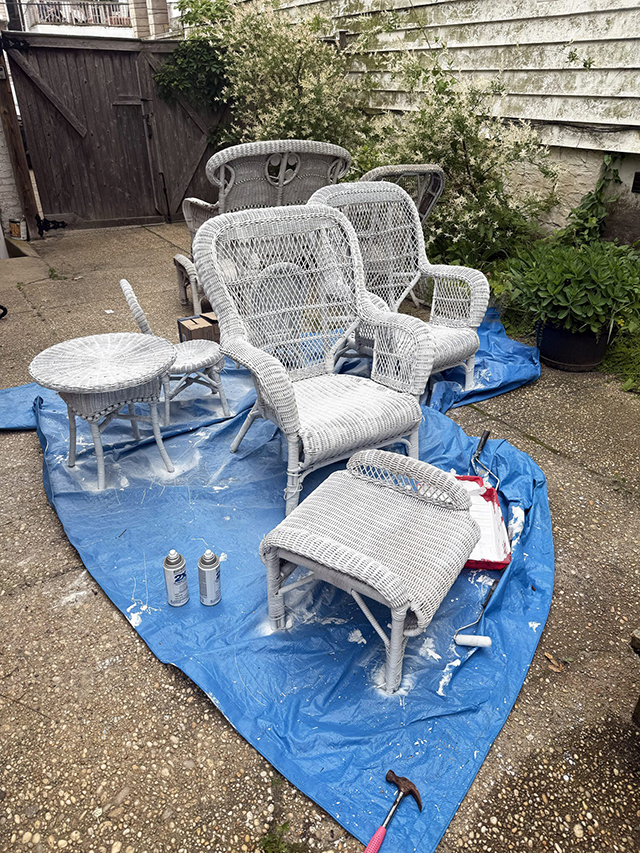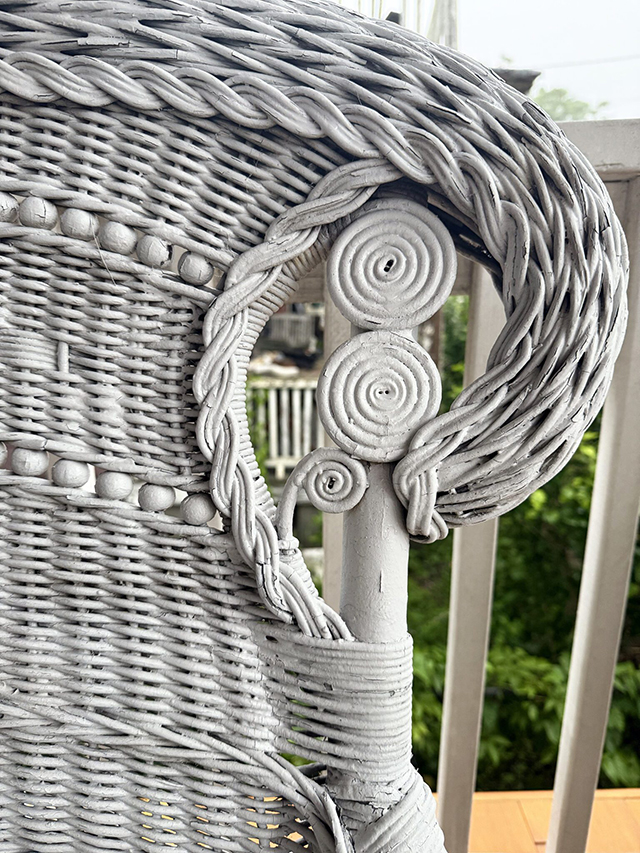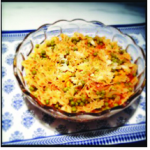Wicker
Far Rockaway through Breezy Point, and all in between – the big ol porches with wicker furnishings are iconic. They hold a place in time—before me, before the boomers, before their parents. These porches are portals. A glimpse into another version of Rockaway: a place where women’s long, lacy dresses touched the sand, parasols twirling, walking next to the gentlemen in tophats. Not a Croc in to be seen! Where summer homes were grand, dance halls held the drama, and fishing piers lined the Irish Riviera. All the porches whispered, the secrets woven into the wicker chairs, from then to now.
I remember watching Oprah as a kid—an episode where she went on about the charm of Southern porches. The screen flashed images of wraparounds, decked out with ornate wicker furniture made cozy with decorative pillows; flower pots and hanging baskets, too. “When I grow up, I want all that.”
And here I am.
This summer, my own porch needed a serious refresh. The deck hadn’t been stained since it was rebuilt eight years ago? The light fixtures were rusted from the salty storms. And the wicker furniture – shabby and not sheik. Oprah would scowl.
I dragged everything out to the yard and got to work with spray paint and an old tarp. By the 4th or 5th chair, my finger started hurting, my shirt was spray-paint-sticky, and I caught myself thinking, “Maybe this is why people buy the fake plastic stuff.” It’s so much easier. I get it. As we get older, convenience starts to matter, finding time gets harder, you need energy, and maintenance costs money. I thought about giving in.
Wicker is one of the oldest furniture-making techniques in recorded history.
But then, I looked closely at my wicker loveseat and saw its spiral patterning and intricate weave that looked like thick lace with tiny imperfections. I realized – this is art, culture, and history woven together. And worth all the effort for as many years as I am able.
My next thought was, “I need to know everything about wicker.”
I assumed its origins were African—something connected to basket weaving. But no. I learned that wicker goes back 3,000 years to ancient Egypt. Archaeologists have found woven chests, baskets, and even a chair seat made of wicker buried in King Tut’s Tomb. That’s how long humans have been doing this.
This is art, culture, and history all woven together. And worth all the effort to maintain for as many years as I am able.
I also learned, wicker isn’t a material. It’s a method – the weaving technique. The material can be rattan (palm), bamboo, willow, reed, or technically anything really. The word “wicker” is Scandinavian, meaning “to bend,” and vikker, “willow, ” meaning bendable willow.
Here’s a little timeline I pieced together from the Googlevers Wicker’s path across history:
- 3000 B.C. – Wicker weaving is invented by ancient Egyptians for functional and decorative uses. Wicker is one of the oldest furniture-making techniques in recorded history.
- 1620 – The Mayflower lands with a wicker baby cradle. Woven furniture enters America.
- 1851 – Cyrus Wakefield, “Father of the Wicker Industry,” established the Wakefield Rattan Company in Massachusetts, leading the way in bringing wicker furniture into mass production in the U.S.
- 1860–1880 – The Victorian Era was the golden age of wicker. Ornate, curvy linear designs became widely popular, especially among the upper class.
- Early 1900s – The Arts and Crafts Movement, rooted in a reaction to industrialization, gains momentum. In New England and other parts of the country, wicker furniture sees a revival as people embrace handcrafted, simple designs made from natural materials.
- 1960s – Wicker has another surge in popularity during the countercultural movement. Influenced by bohemian styles and a return to natural, earthy aesthetics, wicker became a staple in homes, sunrooms, and patios, particularly coastal regions where laid-back, eclectic design flourished.
- Mid-2000s – Synthetic Wicker becomes widely used in commercial-grade outdoor furniture. It’s valued for its durability, low maintenance, and weather resistance, but lacks the charm and history of its inspiration.
Wicker has lived many lives — and I’m learning that I have too. There’s a past that lives on my porch, and a future I’m looking forward to. And at present, a summer to enjoy. Wicker is woven into history. Into porches. Into places like our Rockaway.
Source: patioproductions.com, wikipedia.org/wiki/Wicker, wickerwoman.com

























